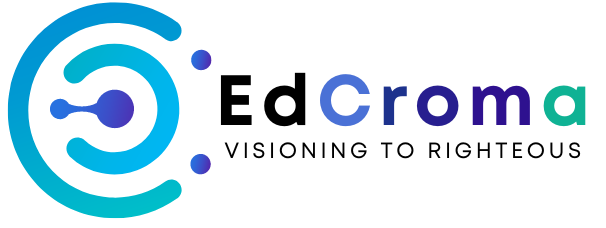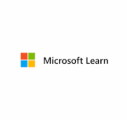- All
- Favorite
- Popular
- Most rated

Optimize vacuum in Azure Database for PostgreSQL
Azure Database for PostgreSQL uses vacuum and autovacuum to remove rows that have been marked as soft-deleted after an update or deletion.

Work with MySQL Databases on Azure
Azure Database for MySQL is a fully managed database platform. In this learning path you'll find out how to manage and optimize Azure Database for MySQL. After completing this learning path, you'll be able to:

Use system catalogs and system views in PostgreSQL
System information is known as metadata and is stored in system catalogs in Azure Database for PostgreSQL. In addition to directly accessing system catalogs, you can access system views.

Explore MySQL Architecture
Explore the component parts of MySQL, and learn how to find your way around Azure Database for MySQL.

Understand client-server communication in MySQL
Learn about connection handling in MySQL, back up and restore, and the client interface options available for MySQL.

Introduction to SQL Server 2022 data virtualization
Learn about data virtualization, enhanced Polybase features in SQL Server 2022, and how to use Polybase to access and query external data.

Understand the built-in query intelligence enhancements of SQL Server 2022
Learn about and use the Intelligent Query Processing feature enhancements in SQL Server 2022.

Explore SQL Server 2022 capabilities
Learn about SQL Server 2022 enhancements, including:

Understand client-server communication in PostgreSQL
PostgreSQL is a client-server system, which allows many clients to connect to a central server. In this module, you learn how PostgreSQL manages connections from clients, and look at some common PostgreSQL client tools.

Procedures and functions in PostgreSQL
PostgreSQL supports stored procedures and functions to make SQL queries reusable. In this module, you learn how to create and run stored procedures and functions.

Understand concurrency in PostgreSQL
Azure Database for PostgreSQL is a multi-user relational database solution. The increase in users brings a risk of conflicts and so it is important to understand the concurrency systems that are in place.

Configure and migrate to Azure Database for PostgreSQL
Azure Database for PostgreSQL is a Platform as a Service database service in the Microsoft cloud. It bases itself on the PostgreSQL open-source relational database and includes built-in high availability, automatic backup and restore, as well as comprehensive security features. The pay-as-you-go pricing model provides predictable performance and near-instant scaling. In this learning path, you learn the main features of PostgreSQL and how they work in Azure Database for PostgreSQL. You learn about the different Azure Database for PostgreSQL implementation options, and how to configure a server for your needs.

Understand concurrency in MySQL
Learn about concurrency in MySQL, including how to limit the number of connections, and when to use thread pools.

Migrate to Azure Database for PostgreSQL flexible server
Azure Database for PostgreSQL Flexible Server supports data migration from PostgreSQL servers. This module covers online and offline migration tools and methods, helping you choose the right approach for your scenario.

Introduction to SQL Server 2022 T-SQL enhancements
Learn the new and improved SQL Server 2022 functions that will enhance the querying and creation of T-SQL objects.

Secure MySQL
Learn about security and encryption in Azure Database for MySQL.

Secure Azure Database for PostgreSQL
Azure Database for PostgreSQL includes comprehensive security features including encryption, authentication, and granting permissions to database users. In this module, you learn about the security features of Azure Database for PostgreSQL.

Configure and manage Azure Database for PostgreSQL
Azure Database for PostgreSQL employs system catalogs and views to manage metadata efficiently. Understanding these can significantly enhance database performance and streamline the administration of PostgreSQL systems.

Understand write-ahead logging
Azure Database for PostgreSQL is an ACID compliant database service. Write-ahead logging ensures changes are both atomic and durable. In this module, you learn how Azure Database for PostgreSQL implements write-ahead logging.

Tune queries in Azure Database for PostgreSQL
Database management systems (DBMSs) need systems to understand the data and the queries that are running against this data. It's important to understand how performance tuning works and how you can assess performance metrics.

Explore PostgreSQL architecture
PostgreSQL is an open-source relational database system that is available as an Azure service. In this module, you learn about the PostgreSQL architecture, and how to manage different aspects of Azure Database for PostgreSQL.

Understand PostgreSQL query processing
The Azure Database for PostgreSQL server receives SQL queries and returns the relevant results. Each SQL query goes through several stages in order to return the correct results as quickly as possible.

Understand the MySQL storage engine
Learn about MySQL's pluggable storage engine model, common storage engines, and storage engines supported by Azure Database for MySQL.

Explore query performance optimization
Read and understand various forms of execution plans. Compare estimated vs actual plans. Learn how and why plans are generated. Understand the purpose and benefits of the Query Store.
In-Depth Exploration of Microsoft Learn
Microsoft Learn is an innovative online educational platform developed by Microsoft, designed to offer a wide range of free, interactive learning opportunities. It caters to individuals looking to enhance their knowledge and skills across various technological fields such as cloud computing, artificial intelligence, data science, and software development. Since its launch, Microsoft Learn has become a crucial resource for professionals aiming to stay ahead in the technology sector.Origins and Evolution of Microsoft Learn
Launched with the mission to make high-quality education accessible to everyone, Microsoft Learn initially focused on Microsoft’s core technologies, including Azure and Microsoft 365. Over time, the platform has broadened its scope to cover a wide array of topics, reflecting the ever-evolving tech landscape and diverse learner needs. This evolution has established Microsoft Learn as a central hub for tech education.Impact on Online Education
Microsoft Learn has transformed online education by integrating interactive and hands-on learning experiences. The platform’s key contributions include:- Hands-On Learning: Provides practical scenarios to apply knowledge.
- Interactive Elements: Includes labs, quizzes, and exercises that engage users actively.
- Personalized Learning Paths: Tailors educational experiences to individual goals and interests.
Key Features and Advantages
Microsoft Learn offers several notable features:- Free Access to Learning Resources: Enjoy comprehensive educational content without any cost, making high-quality learning accessible to all.
- Interactive Learning Experience: Engage with hands-on labs, quizzes, and real-world scenarios to apply and retain knowledge effectively.
- Extensive Course Catalog: Explore a wide range of courses in cloud computing, artificial intelligence, data science, and more.
- Personalized Learning Paths: Follow guided paths tailored to your career goals and interests for a customized learning journey.
- Certification Preparation: Access resources and practice tests to help prepare for Microsoft certification exams and enhance your professional credentials.
- Practical Application: Build confidence and proficiency through practical exercises that simulate real-world challenges.
- Integration with Microsoft Ecosystem: Utilize the latest tools and technologies within Microsoft’s ecosystem to stay updated with industry trends.
- Continuous Learning Support: Benefit from regularly updated content that reflects the latest advancements in technology.

